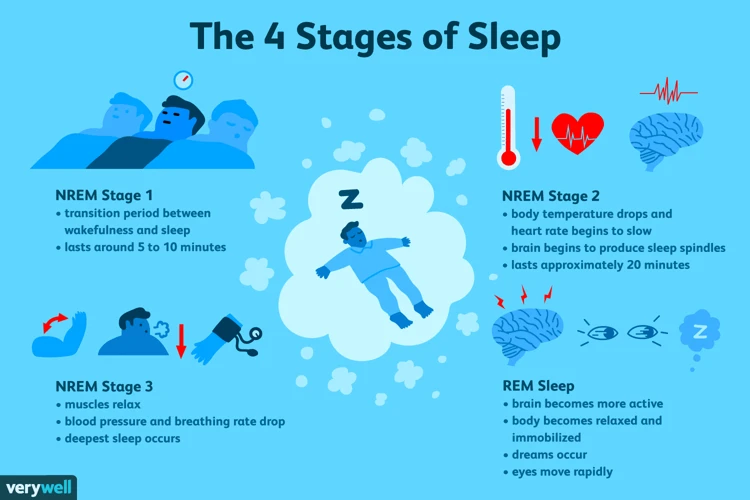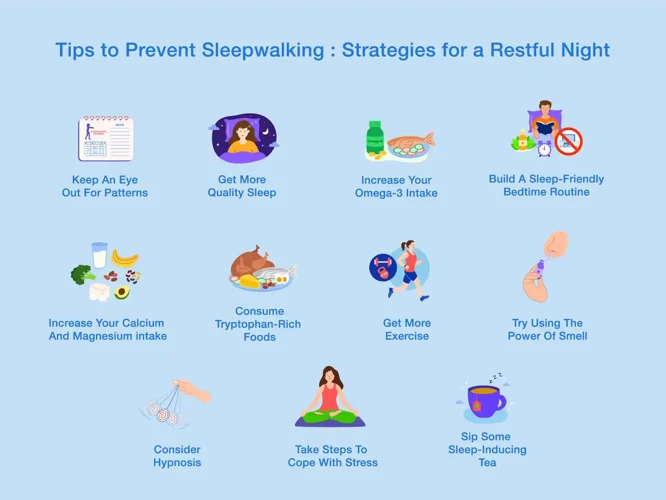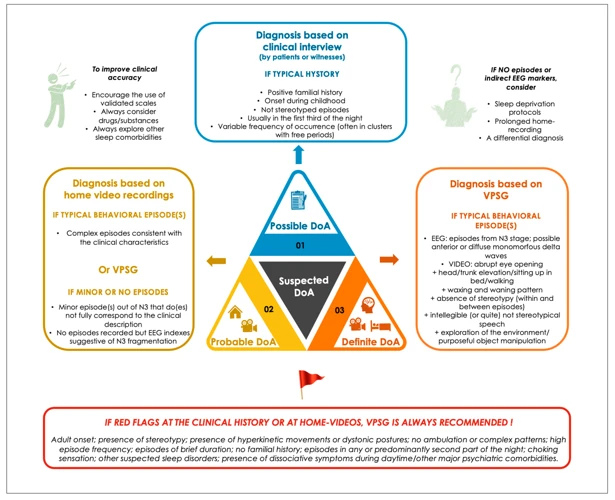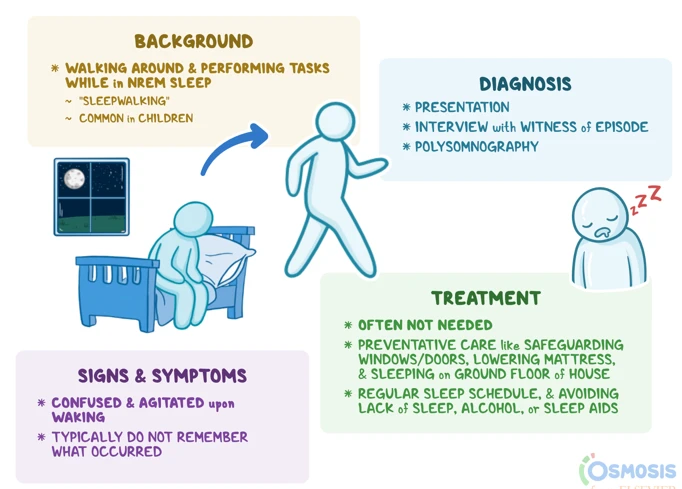Can you imagine waking up in the middle of the night to find your child walking around the house, seemingly asleep? Sleepwalking in children can be a perplexing and unsettling experience for parents. It is a parasomnia disorder that commonly occurs during deep sleep, causing children to engage in activities while still asleep. In this article, we will explore the causes, symptoms, risk factors, and provide practical tips for managing sleepwalking episodes. Understanding this phenomenon is crucial for parents to ensure the safety and well-being of their children. So, let’s delve into the world of sleepwalking and discover what every parent needs to know.
Causes of Sleepwalking

The causes of sleepwalking in children can be multifaceted and often perplexing. While the exact mechanisms behind sleepwalking are still not fully understood, several factors have been identified as potential contributors. Genetic factors play a significant role, as sleepwalking tends to run in families. Sleep deprivation, whether it’s due to a lack of overall sleep or fragmented sleep patterns, can also trigger sleepwalking episodes. Additionally, an irregular sleep schedule can disrupt the normal sleep-wake cycle, leading to sleepwalking. While there are numerous theories and hypotheses surrounding sleepwalking, the science behind its occurrence is still being explored. Understanding the underlying causes can provide valuable insights into the prevention and management strategies for sleepwalking episodes. For more information on the myths surrounding sleepwalking, you can read our informative article on debunking common myths of sleepwalking.
1. Genetic Factors
Genetic factors have been found to play a significant role in the occurrence of sleepwalking among children. Research suggests that there is a familial link, meaning that children are more likely to experience sleepwalking if one or both of their parents have a history of the condition. This suggests a genetic predisposition to sleepwalking. Although the exact genes responsible for sleepwalking have not yet been identified, studies have shown that certain genetic variations may increase the likelihood of developing this sleep disorder. Researchers believe that these variations may affect the regulation of sleep and the arousal mechanisms in the brain. Understanding the genetic basis of sleepwalking can help shed light on the underlying mechanisms and potentially lead to more targeted treatment options. To learn more about the science behind sleepwalking, you can refer to our comprehensive article on the science behind sleepwalking explained.
2. Sleep Deprivation
Sleep deprivation can be a significant contributing factor to sleepwalking in children. When a child does not get enough sleep, it can disrupt their normal sleep patterns and put them at a higher risk of experiencing sleepwalking episodes. Sleep deprivation can occur due to various reasons, such as staying up late, having an inconsistent bedtime routine, or having too many stimulating activities before bed. Lack of adequate sleep can lead to an imbalance in the sleep-wake cycle, making sleepwalking more likely to occur. It is essential for parents to prioritize a consistent and sufficient sleep schedule for their children to minimize the risk of sleepwalking. Creating a calm and soothing bedtime routine, ensuring a comfortable sleep environment, and avoiding stimulating activities close to bedtime can help promote healthy sleep habits and reduce the chances of sleep deprivation-induced sleepwalking. If you want to learn more about treatment options for sleepwalking, you can read our comprehensive article on available treatment options for sleepwalking.
3. Irregular Sleep Schedule
An irregular sleep schedule can significantly contribute to sleepwalking episodes in children. When a child’s sleep pattern is inconsistent, it disrupts the natural circadian rhythm, which regulates sleep and wake cycles. Sleep deprivation due to irregular sleeping patterns can increase the likelihood of sleepwalking. This can occur when a child goes to bed at different times each night or has an inconsistent wake-up time. Erratic sleep patterns can throw off the body’s internal clock, leading to confusion in the sleep-wake cycle. As a result, the child may experience disturbances during the transition from deep sleep to wakefulness, triggering episodes of sleepwalking. To minimize the risk of sleepwalking due to an irregular sleep schedule, it is essential to establish a consistent bedtime routine, enforce regular sleep times, and create a calm and relaxing sleep environment. By promoting a consistent sleep schedule, parents can help regulate their child’s circadian rhythm and reduce the occurrence of sleepwalking episodes.
Symptoms of Sleepwalking

Recognizing the symptoms of sleepwalking in children is crucial for parents to identify and understand this sleep disorder. Sleepwalking can manifest in various ways, and it’s important to be aware of the signs. One prominent symptom is walking or engaging in activities while asleep. Children may move around the house, open doors, or even attempt to perform daily tasks like dressing or eating—all while still in a state of sleep. Another noticeable symptom is a blank stare or glassy eyes. Sleepwalkers often have a distant, vacant look in their eyes as they navigate their surroundings. Additionally, sleepwalkers are usually difficult to wake up during an episode, which can be a cause for concern. Understanding these symptoms can help parents differentiate between normal sleep disturbances and sleepwalking episodes.
1. Walking or Engaging in Activities While Asleep
Sleepwalking is characterized by the act of walking or engaging in activities while still asleep. Children who sleepwalk may exhibit behaviors such as getting out of bed, wandering around the house, or even leaving the house altogether. It is important for parents to understand that during these episodes, their child is not fully conscious or aware of their actions. Sleepwalking typically occurs during the deeper stages of sleep, usually within the first few hours after falling asleep. While it can be alarming to witness your child moving around while seemingly asleep, it is crucial to remain calm and avoid trying to wake them abruptly, as this may cause confusion and disorientation. Instead, gently guide your child back to bed and ensure they are safe and secure. It is also important to create a safe sleep environment by removing any potential hazards that could cause injury during sleepwalking episodes. Understanding the behaviors associated with sleepwalking can help parents effectively manage and support their child during these episodes.
2. Blank Stare or Glassy Eyes
During a sleepwalking episode, one of the noticeable symptoms is a blank stare or glassy eyes. When a child is sleepwalking, their eyes may appear vacant or unfocused, as if they are not fully present. This blank stare or glassy-eyed look is a result of the child’s brain being in a sleep state while their body is physically active. It can be unsettling for parents to witness their child’s eyes without any signs of recognition or awareness. The empty gaze is often accompanied by other sleepwalking behaviors, such as moving around the house or engaging in activities while still asleep. It’s important for parents to understand that during these episodes, the child is not consciously aware of their surroundings, despite their eyes being open. This symptom, along with other indicators, can help distinguish sleepwalking from other sleep-related behaviors. By recognizing the blank stare or glassy eyes as a characteristic of sleepwalking, parents can better respond and ensure the safety of their child during these episodes.
3. Difficult to Wake Up
When it comes to sleepwalking, one of the key symptoms to look out for is the difficulty of waking up the sleepwalking child. During a sleepwalking episode, children may appear to be in a deep sleep and can be challenging to awaken. They may not respond to gentle shaking, calling their name, or even loud noises. This difficulty in rousing the child from sleep is due to the unique state of consciousness during sleepwalking. Sleepwalkers are in a state of partial arousal, where their brain is not fully awake, but neither are they in a deep sleep. The transition from sleepwalking to complete wakefulness can be gradual and slow. As a parent, it’s important to remain patient and avoid using any forceful or startling methods to wake up your child. Instead, gently guide them back to bed and create a calm and peaceful environment that promotes falling back asleep. Taking a gentle approach and allowing the child to naturally return to sleep ensures their safety and minimizes any potential disorientation that may occur if they are abruptly awakened.
Risk Factors for Sleepwalking

Several risk factors contribute to the likelihood of children experiencing sleepwalking episodes. Age is a significant factor, with sleepwalking being more common in children aged between 4 and 8 years old. Sleepwalking tends to decrease as children enter adolescence. Another important risk factor is family history. If a child has a parent or sibling who experiences sleepwalking, they are more likely to develop the condition as well. Additionally, underlying sleep disorders such as sleep apnea or restless leg syndrome can increase the chances of sleepwalking episodes. It is essential for parents to be aware of these risk factors to better understand their child’s susceptibility to sleepwalking and take appropriate precautions to ensure their safety during sleep episodes.
1. Age
1. Age: Age is one of the key risk factors associated with sleepwalking in children. Sleepwalking tends to be more common in children between the ages of 4 and 8, although it can occur in children as young as 18 months. The prevalence of sleepwalking tends to decrease as children grow older, with most children outgrowing it by their teenage years. This age-related pattern suggests that sleepwalking may be linked to the development and maturation of the brain and sleep patterns in children. During these early years, children experience more deep sleep, which is when sleepwalking typically occurs. It is important for parents to be aware of this age-related risk factor and take necessary precautions to ensure the safety of their sleepwalking child.
2. Family History
Having a family history of sleepwalking can significantly increase the likelihood of a child experiencing episodes of sleepwalking. Research has shown that there is a strong genetic component to sleepwalking, with children having a much higher chance of sleepwalking if one or both parents have a history of sleepwalking. The exact mechanisms behind the hereditary nature of sleepwalking are still not fully understood, but it is believed to involve a combination of genetic and environmental factors.
One possible explanation is that certain genetic variations or mutations may affect the normal functioning of the brain during sleep, leading to the activation of sleepwalking behaviors. These genetic factors could influence the regulation and coordination of brain activity during sleep, causing disruptions and abnormalities that manifest as sleepwalking episodes.
Growing up in an environment where sleepwalking is common among family members could also contribute to a child adopting sleepwalking behaviors. Children may be more likely to imitate the actions they observe in their sleepwalking relatives, making them more prone to engaging in sleepwalking themselves.
Understanding the influence of family history on sleepwalking can help parents recognize the potential risk for their child. By being aware of this familial connection, parents can take proactive steps to create a safe sleep environment and implement preventive measures to reduce the likelihood of their child experiencing sleepwalking episodes.
3. Sleep Disorders
Sleep disorders can also contribute to sleepwalking episodes in children. Conditions such as obstructive sleep apnea, where breathing is interrupted during sleep, can disrupt the sleep cycle and increase the likelihood of sleepwalking. Another common sleep disorder associated with sleepwalking is night terrors. Night terrors are intense episodes of fear and distress that occur during sleep, often accompanied by screaming or thrashing. They can arouse the child from deep sleep, leading to sleepwalking episodes. Additionally, restless leg syndrome (RLS) and periodic limb movement disorder (PLMD) have been linked to sleepwalking. RLS causes uncomfortable sensations in the legs, often leading to movements that can disrupt sleep, while PLMD involves repetitive jerking or flexing of the limbs during sleep. Identifying and treating any underlying sleep disorders can be instrumental in managing sleepwalking episodes and improving overall sleep quality for children. If you’re interested in learning more about the science behind sleep disorders and their impact on sleepwalking, you can check out our insightful article on the science behind sleepwalking explained.
Managing Sleepwalking Episodes

Managing sleepwalking episodes in children requires a comprehensive approach aimed at ensuring the safety and well-being of the child. Creating a safe sleep environment is crucial to minimize potential hazards during sleepwalking episodes. This can include removing obstacles and sharp objects from the child’s bedroom. Establishing a consistent sleep routine promotes healthy sleep patterns and can reduce the frequency of sleepwalking incidents. Minimizing stress and anxiety in the child’s life can also contribute to better sleep quality and decrease the likelihood of sleepwalking. Identifying and monitoring triggers such as certain foods or sleep disruptions can help parents anticipate and prevent sleepwalking episodes. It is important to note that while managing sleepwalking can be challenging, understanding and implementing these strategies can greatly assist in reducing the impact of sleepwalking on the child’s overall well-being. For more information on treatment options for sleepwalking, you can read our comprehensive guide on available treatment options for sleepwalking.
1. Create a Safe Sleep Environment
When it comes to managing sleepwalking episodes in children, creating a safe sleep environment is crucial. Here are some key steps parents can take to ensure a secure sleeping environment for their child. Firstly, remove any potential hazards or obstacles from the child’s bedroom or sleeping area. This may include sharp objects, furniture with sharp corners, or small items that could be swallowed. Securing windows and doors with childproof locks can prevent accidental exits during sleepwalking episodes. Ensuring adequate lighting within the sleep environment can help children navigate their surroundings if they do wake up while sleepwalking. It is also important to keep the bedroom temperature comfortable as extreme temperatures can disrupt sleep. Additionally, using cots or safety rails for younger children can prevent falls from the bed during sleepwalking. By implementing these measures, parents can create a safe and secure sleep environment that minimizes the risk associated with sleepwalking episodes.
2. Establish a Consistent Sleep Routine
Establishing a consistent sleep routine can be immensely helpful in managing sleepwalking episodes in children. Here are some key points to keep in mind:
– Consistent Bedtime: Set a specific and regular bedtime for your child to ensure they are getting enough sleep. Consistency helps regulate their internal body clock and promotes better sleep quality.
– Winding Down: Establish a calming bedtime routine that involves activities such as reading a book, taking a warm bath, or listening to soft music. This helps signal to the body that it’s time to relax and prepare for sleep.
– Avoid Stimulants: Limit your child’s intake of caffeine or sugary snacks close to bedtime as these can interfere with falling asleep and disrupt the sleep cycle.
– Create a Comfortable Environment: Make sure your child’s bedroom is conducive to sleep. Keep the room dark, quiet, and at a comfortable temperature. Use blackout curtains, white noise machines, or soft night lights, depending on what helps your child feel most secure.
– Consistent Wake-Up Time: Encourage your child to wake up at the same time every day, even on weekends. This helps regulate their sleep patterns and promotes better overall sleep hygiene.
– Avoid Electronics: Limit your child’s exposure to screens, such as TVs, smartphones, and tablets, before bedtime. The blue light emitted by these devices can suppress the production of the sleep hormone melatonin, making it harder for your child to fall asleep.
By establishing a consistent sleep routine, you can help your child develop healthy sleep habits, reduce the likelihood of sleepwalking episodes, and promote overall restful sleep.
3. Minimize Stress and Anxiety
One important aspect of managing sleepwalking episodes in children is to minimize stress and anxiety in their lives. Stress and anxiety can exacerbate sleep disturbances and contribute to the occurrence of sleepwalking. Here are some strategies parents can implement to help reduce stress and promote a calm sleep environment:
– Create a Relaxing Bedtime Routine: Establishing a consistent bedtime routine can help signal to the child’s brain that it is time to wind down and prepare for sleep. This routine can include activities such as reading a bedtime story, taking a warm bath, or practicing relaxation techniques like deep breathing.
– Promote a Peaceful Sleep Environment: Ensure that your child’s bedroom is a quiet, dark, and comfortable space that is conducive to a good night’s sleep. Implementing strategies such as using white noise machines, blackout curtains, or a comfortable mattress can help create an optimal sleep environment.
– Encourage Healthy Coping Mechanisms: Teach your child healthy ways to cope with stress and anxiety during the day. This can include engaging in physical activities, practicing mindfulness or meditation, or pursuing hobbies that they enjoy. Encouraging open communication and offering emotional support can also help alleviate any underlying stressors.
– Limit Exposure to Stressful Situations: Be mindful of your child’s exposure to stressful events or situations, both at home and at school. Take steps to minimize these stressors whenever possible and provide a safe and nurturing environment for your child to relax and unwind.
By implementing these strategies, parents can help minimize stress and anxiety in their child’s life, ultimately reducing the likelihood of sleepwalking episodes. Remember, each child is unique, so it may take some trial and error to find the most effective stress-reducing techniques for your child.
4. Keep an Eye on Triggers
4. Keep an Eye on Triggers:
Identifying triggers that can precipitate sleepwalking episodes is crucial in managing this condition. While triggers can vary from child to child, some common factors to monitor include:
– Lack of sleep: Ensure that your child is getting enough sleep each night. Establish a consistent bedtime routine and create a sleep-friendly environment to promote quality sleep.
– Stress and anxiety: Stressful events or anxiety can trigger sleepwalking in children. Help your child manage stress by creating a calm and supportive environment. Encourage activities that promote relaxation, such as reading or listening to soothing music before bedtime.
– Fatigue: Fatigue can increase the likelihood of sleepwalking episodes. Avoid overscheduling your child’s activities and allow for sufficient rest and downtime throughout the day.
– Illness or fever: Certain illnesses or high fevers can increase the occurrence of sleepwalking. Keep an eye on your child’s health and take necessary measures to manage any illnesses promptly.
– Caffeine or stimulant intake: Limit your child’s consumption of caffeine and other stimulants, especially close to bedtime. These substances can interfere with sleep and potentially trigger sleepwalking episodes.
By tracking and addressing these triggers, you can minimize the occurrence of sleepwalking episodes in your child. However, it’s important to remember that every child is unique, and what triggers sleepwalking in one may not affect another. As you observe and learn about your child’s sleep patterns and behavior, you can better identify and manage specific triggers that contribute to their sleepwalking episodes. For more information on treatment options and management strategies for sleepwalking, you can refer to our comprehensive article on available treatment options for sleepwalking.
When to Seek Medical Help

If you notice that your child is experiencing frequent or severe sleepwalking episodes, it may be necessary to seek medical help. While sleepwalking itself is generally harmless, there are some instances where medical intervention may be required. If your child’s sleepwalking episodes are accompanied by other sleep disorders or symptoms such as night terrors, bedwetting, or excessive daytime sleepiness, it is advisable to consult a healthcare professional. Additionally, if the sleepwalking episodes result in injuries or pose a risk to your child’s safety, medical attention should be sought. A healthcare provider can evaluate your child’s overall health, conduct a thorough examination, and rule out any underlying medical conditions that may be contributing to the sleepwalking episodes. They may also recommend a consultation with a sleep specialist who can further assess and provide appropriate treatment options. Remember, seeking medical help can provide you with peace of mind and ensure that your child receives the necessary support and guidance to manage their sleepwalking episodes effectively.
Tips for Parents
When it comes to dealing with sleepwalking episodes in children, parents play a crucial role in ensuring their safety and well-being. Here are some essential tips for parents to keep in mind. 1. Stay calm during sleepwalking episodes: It is natural to feel anxious or frightened when you see your child sleepwalking, but it’s important to remain calm. Panicking can startle the child or worsen the situation. 2. Gently guide your child back to bed: Instead of forcefully waking your child, gently guide them back to bed. You can softly speak to them or lightly touch their shoulder to help them navigate back to their room. 3. Do not startle or shake your child awake: Avoid shaking or startling your child awake, as it can be disorienting and increase the risk of accidents. Gradual and gentle awakening is preferred. Providing reassurance and comfort once they are awake can help them feel secure. Remember, sleepwalking is usually harmless, and with the right approach, parents can help their child through sleepwalking episodes safely.
1. Stay Calm During Sleepwalking Episodes
During sleepwalking episodes, it is crucial for parents to stay calm and composed. Here are some important points to keep in mind:
1. Avoid Startling or Disturbing the Child: When you encounter your child sleepwalking, it’s essential not to startle or shake them awake. Abrupt actions could disorient or confuse them further, increasing the risk of injury.
2. Ensure Safety: As a parent, prioritize your child’s safety during sleepwalking episodes. Clear any potential hazards from their path, such as sharp objects or obstacles. You may consider placing safety gates at staircases or locking doors and windows to prevent them from wandering outside.
3. Gentle Guiding: Instead of forcefully waking them up, gently guide your child back to bed. Use soft and reassuring words to ease them back into sleep. Remember, they are in a sleep state, so it may take some time for them to settle down.
4. Repetition and Reassurance: If sleepwalking episodes occur frequently, it can be helpful to reassure your child during the daytime. Explain to them what sleepwalking is and that it is not harmful. Let them know that you are there for them and will keep them safe.
5. Consult a Medical Professional: If you have concerns about your child’s sleepwalking episodes, consult a pediatrician or sleep specialist. They can assess the situation, provide further guidance, and offer any necessary treatment options.
Remember, staying calm and implementing safety measures during sleepwalking episodes is crucial for both your child’s well-being and your peace of mind.
2. Gently Guide Your Child Back to Bed
When your child experiences a sleepwalking episode, it is essential to safely guide them back to bed without fully waking them. Here are some tips on how to gently guide your child back to bed:
1. Approach calmly: When you notice that your child is sleepwalking, approach them calmly and quietly. Speaking in a soft and soothing voice can help prevent them from getting startled or agitated.
2. Avoid physical contact: While it may be tempting to grab or shake your child to wake them up, it’s important to refrain from doing so. Physical contact can confuse or startle them, possibly leading to disorientation or even potential injury.
3. Use verbal cues: Instead of using physical touch, gently speak to your child using simple and reassuring phrases. Encourage them to follow your voice and guide them towards their bed.
4. Create a safe path: Clear any obstacles or potential hazards in their path as you guide them back to bed. Ensure that the hallway and their room are well-lit to minimize the risk of tripping or bumping into objects.
5. Reorient gently: Once your child is back in bed, gently help them lie down and get comfortable. Use gentle strokes or soothing gestures to help them relax and settle back into sleep.
Remember, the key is to provide gentle and minimal guidance to help your child return to a peaceful sleep state. For more information on the management of sleepwalking episodes, refer to our comprehensive guide on treatment options for sleepwalking at treatment options for sleepwalking.
3. Do Not Startle or Shake Your Child Awake
When it comes to sleepwalking episodes, it is crucial for parents to refrain from startling or shaking their child awake. While it may be tempting to immediately wake them up to stop the sleepwalking, this approach can be counterproductive and potentially dangerous. Gently guiding the child back to bed is a safer method to ensure they continue sleeping without any sudden disruptions. Startling or shaking a sleepwalking child can lead to confusion, disorientation, and even panic, which may increase the risk of accidents or injuries. It is essential to remember that children in a sleepwalking state are not fully conscious and may become startled or frightened if suddenly awakened. Instead, remain calm and gently redirect them back to their bed, ensuring their safety throughout the process. Providing a soothing and reassuring environment can help ease any apprehension or fear experienced during sleepwalking episodes.
Conclusion
In conclusion, sleepwalking in children is a complex and intriguing phenomenon that can be both worrisome and confusing for parents. While the exact causes of sleepwalking are not fully understood, genetic factors, sleep deprivation, and irregular sleep schedules have been identified as potential contributors. Recognizing the symptoms and risk factors associated with sleepwalking can help parents better understand and manage their child’s episodes. By creating a safe sleep environment, establishing a consistent sleep routine, minimizing stress and anxiety, and identifying potential triggers, parents can reduce the frequency and severity of sleepwalking episodes. it is essential to stay calm and gently guide the child back to bed during an episode, avoiding any startle or attempt to shake them awake. In some cases, seeking medical help may be necessary to rule out any underlying sleep disorders or to explore further treatment options. By taking proactive steps and implementing strategies to manage sleepwalking, parents can help their children sleep safely and peacefully.
Frequently Asked Questions
1. Can sleepwalking be dangerous for children?
Yes, sleepwalking can pose certain risks to children as they may engage in potentially harmful activities while asleep, such as falling down stairs or leaving the house. It is important for parents to create a safe sleep environment to minimize the risk of accidents.
2. At what age does sleepwalking typically start in children?
Sleepwalking usually begins between the ages of 4 and 8, although it can occur in younger or older children as well. It tends to peak during the middle childhood years and may resolve on its own as the child reaches adolescence.
3. Does sleepwalking indicate a psychological disorder?
No, sleepwalking is typically considered a sleep disorder rather than a psychological disorder. However, in some cases, it may be associated with other underlying conditions, such as insomnia or anxiety, that should be addressed.
4. Can sleep deprivation trigger sleepwalking?
Yes, sleep deprivation can increase the likelihood of sleepwalking episodes in children. It is important to ensure that your child is getting adequate and quality sleep on a regular basis to reduce the chances of sleepwalking.
5. Are there any treatments for sleepwalking?
In most cases, sleepwalking in children does not require specific treatment. However, implementing strategies to improve sleep hygiene, such as maintaining a regular sleep schedule and addressing any underlying sleep disorders, can help prevent or minimize sleepwalking episodes.
6. Are there any medications to stop sleepwalking?
Medications are generally not recommended for treating sleepwalking in children unless there are underlying sleep disorders or other medical conditions present. It is best to consult with a healthcare professional for guidance on medication options.
7. Are there any triggers that can worsen sleepwalking in children?
Yes, certain triggers can exacerbate sleepwalking episodes in children, including stress, anxiety, sleep deprivation, fever, medications, and certain medical conditions. Identifying and managing these triggers can help reduce the frequency and severity of sleepwalking.
8. Can sleepwalking be hereditary?
Yes, sleepwalking can have a genetic component, meaning it can run in families. If one or both parents have a history of sleepwalking, their children may be more likely to experience sleepwalking as well.
9. Should I wake up my child during a sleepwalking episode?
It is generally advised not to wake up a sleepwalking child abruptly as it can cause confusion and disorientation. Instead, gently guide them back to bed or ensure their safety until the episode subsides.
10. When should I seek medical help for my child’s sleepwalking?
If your child’s sleepwalking episodes are frequent, intense, or pose a safety risk, it is advisable to consult with a healthcare professional. They can evaluate for any underlying conditions or recommend further interventions if needed.








